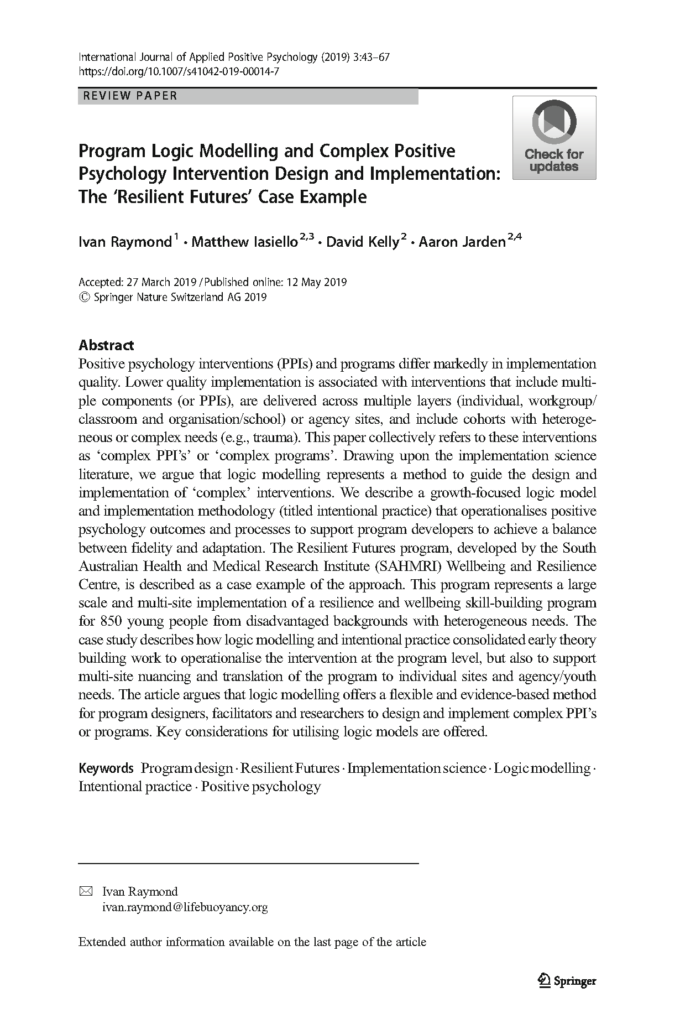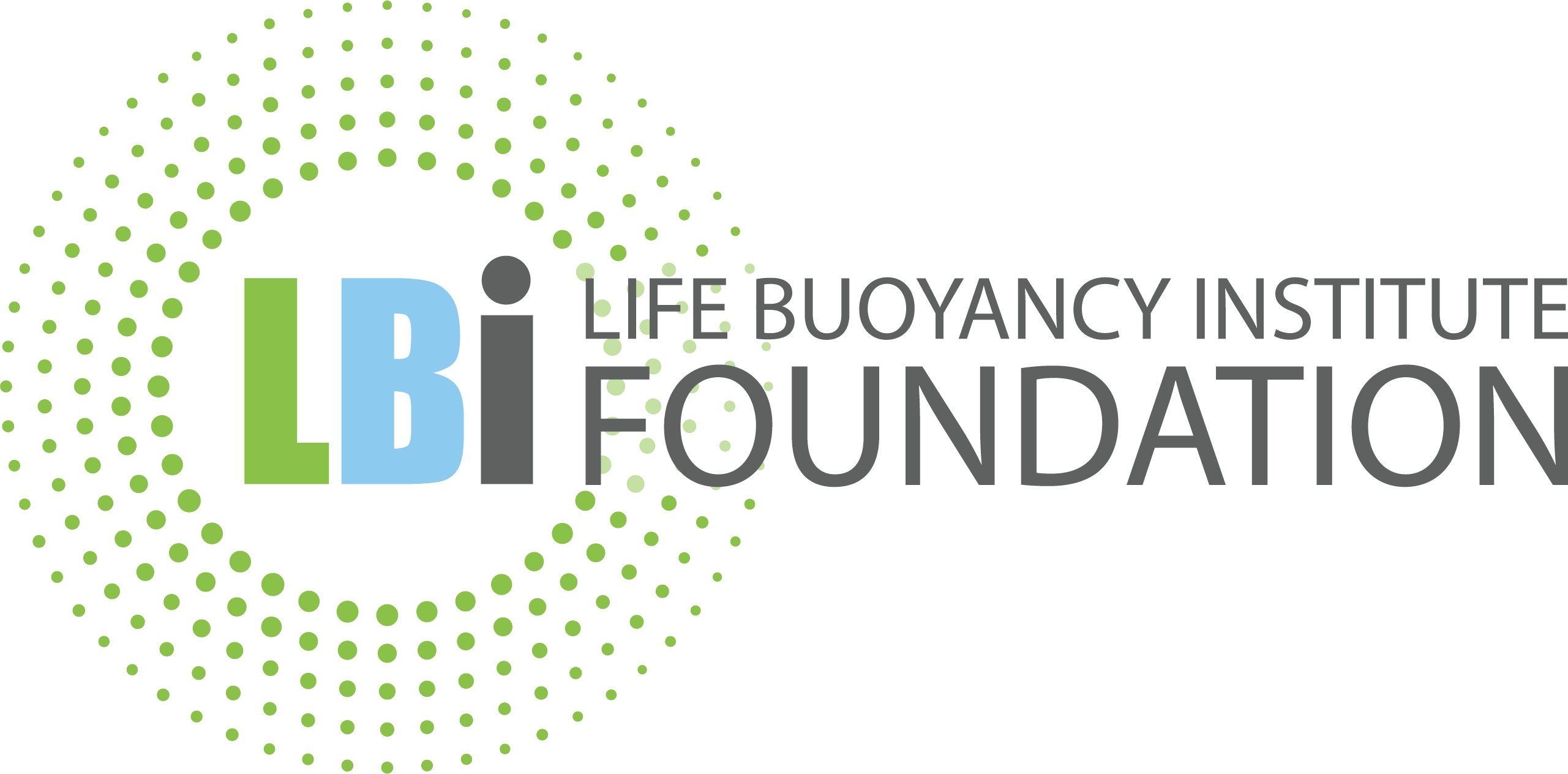Introducing the Article
Program Logic Modelling and Complex Positive Psychology Intervention Design and Implementation: The ‘Resilient Futures’ Case Example
Dr Ivan Raymond, LBI Foundation
Mathew Iasiello, SAHMRI
David Kelly, SAHMRI
Aaron Jarden, SAHMRI
Between 2016 and 2018, SAHMRI delivered the $1.1M ‘Resilient Futures’ program to build the wellbeing and resilience of 1400 young South Australians from disadvantaged backgrounds. For further information click here.
This program was founded upon intentional practice as an approach and set of methods to design and implement the program from the ‘system’ (whole-of-program) to the ‘moment’ (service delivery).
This article:
- Describes the key challenges in designing and implementing complex programs, positive psychology interventions and wellbeing solutions across multi-site settings.
- Highlights the key importance of ‘program fidelity’ and ‘integrity’ as best-practice features of complex program design and implementation.
- Describes the important balance between program integrity and flexibility in whole-of-community program design and implementation.
- Describes how contextualised “whole-of-community” and “whole-of-school” approaches to wellbeing can be operationalised through a logic model and intentional practice.
- Provides an overview of the Life Buoyancy Logic Model.
- Describes the process, steps and best-practice considerations in developing a contextualised whole-of-community framework or complex program, using an intentional practice logic model.
- Provides a populated case example.
Reference:
Raymond, I., Iasiello, M., Kelly, D., & Jarden, A. (2019). Program logic modelling and complex positive psychology intervention design and implementation: The ‘Resilient Futures’ case example. International Journal of Applied Positive Psychology, 3(1), 43-67. doi: 10.1007/s41042-019-00014-7
For further information, please click here.

New Articles
- Wellbeing Responsive Community: A Growth Target for Intentional Mental Health Promotion
- Intentional Practice: A Common Language, Approach and Set of Methods
- Strengthening the Implementation of Trauma Science
- Intentionally Designed and Delivered Grassroots Social-Emotional Learning Programs
- Resilient Futures: An Individual and System Level Approach For Building Youth Resilience
Categories
Key Messages
Significance of the Article
- This article provides foundational considerations for the design and implementation of complex programs or whole-of-school wellbeing initiatives that bring balance to both rigour and flexibility, and seek to translate the science of wellbeing and trauma from the ‘system’ to the ‘moment’.
- It is the foundational article in describing how the approach and set of methods of intentional practice can be applied to support the design and implementation of programs and interventions that span the ‘system’ (whole-of-community) to the ‘moment’ (intentional support).
- The article demonstrates how intentional practice logic modelling offers a flexible and evidence-based method for program designers, facilitators and researchers to design and implement complex programs and whole-of-community wellbeing or therapeutic initiatives.
- This is a foundational article for leaders and programmers who are interested in drawing upon intentional practice logic modelling to design and implement (1) whole-of-school wellbeing frameworks, (2) therapeutic or trauma-informed program models and (3) complex programs that bring focus to wellbeing and behavioural outcomes.
Further Information
For further information on this summative review, please contact Dr Ivan Raymond on ivan.raymond@lbi.org.au







